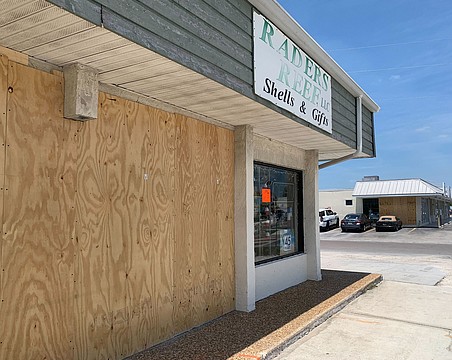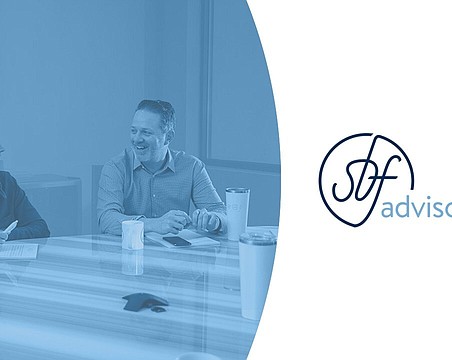To my surprise, I recently received several inquiries about developing a customer satisfaction program for industries that previously appeared unconcerned with customer satisfaction.
My articles generally have a common theme - building consistently effective relationships. The themes revolve around the workplace application of relationships: employee selection/retention/satisfaction; customer satisfaction; managing key customer accounts; customer focused leadership and management; increasing individual and organizational effectiveness, etc.
In response to recent interest, I am devoting this month's subject to the foundations and processes needed to create a customer service culture in a business or professional practice. We are all familiar with the principal of reaping what you sow. It is no different in developing a customer service culture. If you sow a program that is quick, superficial and entertaining, you will likely reap something that is shallow, ineffectual and soon forgotten.
Creating a customer satisfaction culture is multi-dimensional. It is based on three foundations: the internal customer, the external customer attitude and customer friendly systems. Everything you do must send a strong "we care" message to your employees and customers. This multi-dimensional approach will involve everyone in a process to achieve an exceptional customer service culture throughout your organization.
"If you can't measure it, you can't manage it." Before beginning the development of customer service culture, you really need to know how your team (organization) currently sees itself - an objective measurement. A simple measuring device will provide the answer for all to see, and later on, it will provide a means of checking your progress. (see sidebar)
Foundation one, focus on the internal customer - the employee. Its purpose is to prepare your organization for transitioning to a sales culture that requires an exceptional internal customer attitude. A satisfied employee will create and keep satisfied customers. Dissatisfied internal customers often cost many times their salary.
A satisfied employee is your best advertisement. In a study called "a pro-employee approach to business vs. a task approach to business," Professor Leonard Schlesinger of the Harvard Business School concluded that companies that have distinguished themselves in the way they hire, train and treat employees experienced the following positive benefits:
×Increases in service, quality, and customer satisfaction of over 50%.
×Growth rates of 60% to 300% greater than their competitors.
×Return on sales 200% to 300% greater than their competitors.
×Return on assets 150% to 300% greater than their competitors.
×Direct impact on employee retention that in turn leads to customer satisfaction that leads to profits.
The key to internal customer satisfaction lies in understanding what employees actually want, not what management thinks they want. A Managing Workforce 2000 survey discovered that employees want: first, recognition for competence and accomplishments; second, respect and dignity; third, personal choice and freedom; fourth, involvement at work; fifth, pride in one's work; sixth, lifestyle quality; seventh, financial security; eighth, self-development; and ninth, health and wellness.
Surprisingly, although important, money is not at the top of the list. Creating an internal customer satisfaction culture will require working to implement your employee's desires. It's simple - find out what they want and provide it. This can be accomplished by establishing mixed management/employee teams to address the issues. At regular intervals, you can use the team measurement to check your ongoing progress.
Foundation two, creating a sales culture - a satisfied employee is essential to customer satisfaction. A satisfied employee must be trained to give exceptional service. Customers are different and have different expectations. It's essential to understand basic customer differences because you must treat each type of customer, as they would like to be treated.
Research** shows that customers tend to buy from people with behavioral styles similar to their own. Research has also shown that individuals tend to sell to people with behavioral styles similar to their own, and people definitely buy from people they like.
If you recognize the behavioral style of a customer and adapt, customer satisfaction and sales increase. Sales increase because relationships increase. Customer satisfaction increases because communication needs are being met. Fortunately for us, there are only four basic types of behavior. Unfortunately, it is beyond the scope of this article to get into a discussion of the behavioral styles. I'll address that specifically in future articles, or you can contact me by e-mail.
Creating an exceptional customer attitude is like building a building. It is a logical, step-by-step process that requires;
A foundation - a customer mission so that all employees are on the same page.
Standards of excellence - once the customer mission is defined, standards must be developed to define the mission in all areas of the organization.
Training needs identified - each person must be trained to meet the standards.
Training methodology - the appropriate training methodology must be implemented to ensure the greatest results at the least expense of time and money.
Measurement and follow-up - standards of excellence must be measured to ensure they are being followed. Positive reinforcement must occur.
Foundation three, customer friendly systems - Efficient and effective systems send a resounding message - we care - to your customers, positioning you as any easy place to do business with. Customer friendly systems contain systems, processes and procedures and provide for identifying those areas that need work. Systems are those groups of elements that interact to function as a whole. Processes are a series of actions or operations leading to desired results and procedures are those step-wise definitions and explanations of the actions required to complete a process.
As you examine your customer friendly systems, procedures and processes, you will need to identify areas that require attention. Employee and customer feedback will be an important part of this process. Special project teams can be formed to focus on improving specific systems and processes.
(The word customer, as used in this article, is interchangeable with client as in professional practices. There is no difference. Research validated by Bill Bonnstetter, 1984-1995. Thanks to Bill Bonnstetter and the dedicated staff at TTI Performance Systems for their extensive research and field testing of many of the high-performance concepts contained in this article.)
Stephen Garber lives and works in the Sarasota area coaching organizations and individuals in improving high performance behaviors and attitudes. Questions and comments are always welcome at [email protected].
MEASURING HIGH PERFORMING TEAMS
The baseline measurement begins with showing the group a 10-minute video, and asking them to take notes during the film about the qualities the team exhibits. At the film's conclusion, the group is asked to list the qualities each participant felt made the team, shown in the film, successful. The facilitator boards the answers.
Next, the group is asked to separately list the qualities each participant feels are necessary for any high performing team to possess. It is necessary for the group to unanimously agree on all the team qualities that are to be included. A discussion is normally expected and encouraged concerning the definition of each proposed quality. What is really going on here is that the team is defining the qualities that the group unanimously feels are important - not the qualities that someone else feels are important.
Next, the agreed on qualities are numbered on the flip chart - without regard to priority - and the group is asked to list each of them on a supplied form in the same numbered sequence that appears on the flip chart. A measurement scale is passed out. Individual participants are asked to score each quality according to the supplied scale as it currently exists in their team (or organization).
The scale:
1 = Strongly Agree (our team or organization has this quality)
2 = Agree (team has this quality but could do better)
3 = Not Sure/Undecided (try to stay away from this one)
4 = Disagree (team does not have this quality)
5= Strongly Disagree (team definitely lacks this quality)
When participants have scored the forms, the facilitator collects the papers. Participants are asked not to put their names on the sheets. The facilitator then enters the results on a spreadsheet and graph. With the qualities already identified, you can ask participants to re-score the sheet whenever you want to check on your progress.





